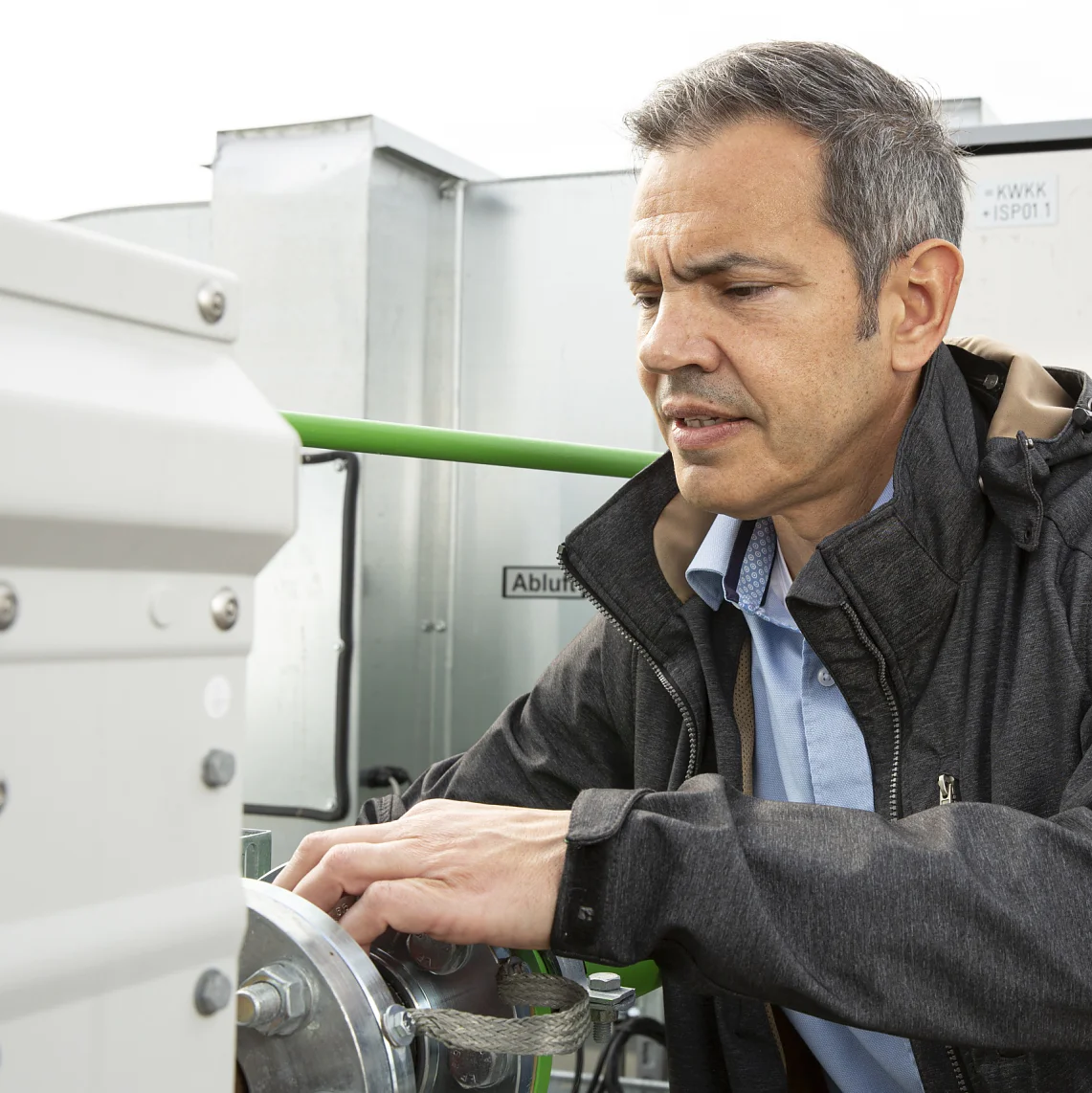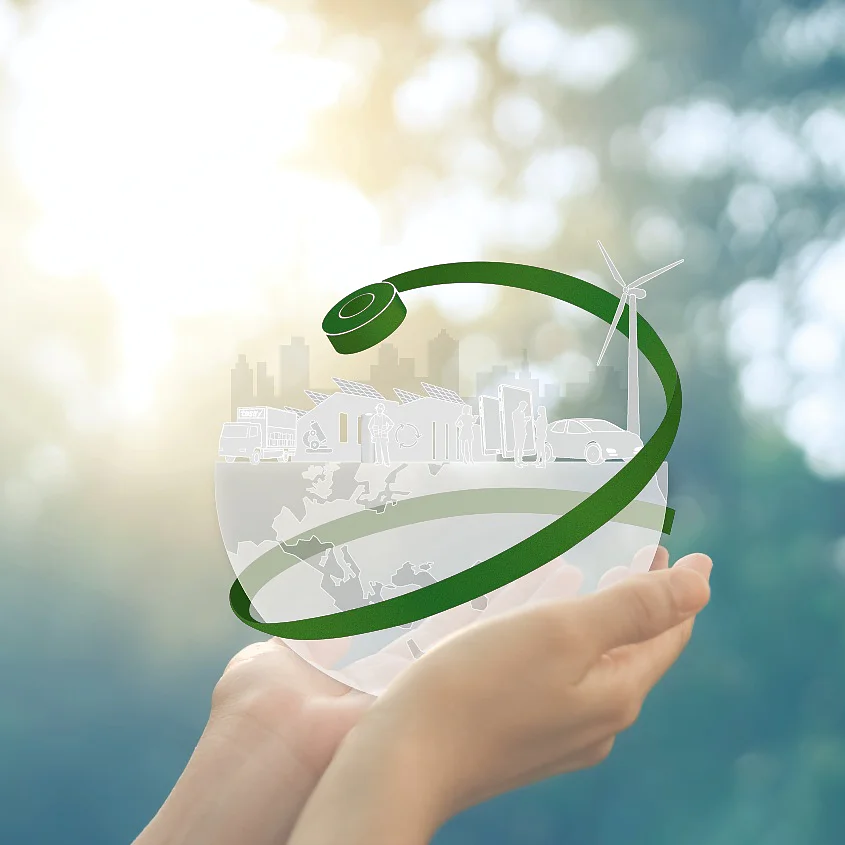Climate change is one of the central societal challenges of our time. Thus, private individuals as well as companies and states are called upon to make their contribution to environmental protection. The most important checkpoint is the Paris Climate Protection Agreement signed by all 190 countries of the United Nations: It aims to limit the increase in the global average temperature to 1.5 degrees. In the fight against global warming, the substitution of fossil energy sources – such as coal or oil – with renewable energies plays a key role.

Power from sun, wind, and water
Sustainability
Since the end of 2020, all tesa offices and production locations around the world are powered 100% by electricity from renewable energy sources – a further step towards climate neutrality.
Renewable energies are on the rise
Renewable resources are not only available in almost unlimited quantities, but they also reduce CO₂ emissions into the atmosphere. A positive trend: Already in 2019, power generation plants based on, among others, hydropower, biomass, wind energy, and solar radiation were responsible for around a quarter of global power generation. Furthermore, the consumer demand for green energy is increasing despite the lower prices for conventionally generated electricity. It is evident that a large number of people are rethinking their choices.
48
gigawatt hours
Source tesa SE
"We've set ourselves an ambitious climate target: By 2025, we want to reduce our energy-related CO₂ emissions by 30% (compared to 2018). Moreover, we strive to operate fully climate-neutrally by 2050 (Update 2024: Net zero 2045)."
Head of Corporate Sustainability and Quality Management.

Target: a neutral CO2 balance by 2050 (Update 2024: Net zero 2045)
Environmental protection is a core element on the agenda of the global company tesa. "We've set ourselves an ambitious climate target: By 2025, we want to reduce our energy-related CO₂ emissions by 30% (compared to 2018). Moreover, we strive to operate fully climate-neutrally by 2050 (Update 2024: Net zero 2045)," says Michael Lang, Head of Corporate Sustainability and Quality Management. The company, which specializes in adhesive products and solutions, operates climate protection on three levels: reducing energy consumption, increasing energy efficiency, and using renewable energies. In the latter category, tesa reached a milestone at the end of 2020: Since then all offices and production locations on five continents draw 100% of their electricity from renewable energy sources such as sun, wind, and water. Michael Lang explains how this works in the group with around 5,000 employees in 55 countries: "While in some locations we already use electricity from renewable energy sources, in the future we will acquire so-called green electricity certificates of origin for all other locations. This enables us to guarantee that 100% of the electricity we purchase comes from renewable sources." Furthermore, tesa follows the guidelines of the internationally recognized quality seal 'EKOenergy'. For example, the label only considers wind turbines outside nature reserves and important bird sanctuaries.
Green electricity from our own production
However, to reduce greenhouse gases, tesa not only purchases clean energy, but is also increasingly relying on its own production of electricity. In 2021, an in-house photovoltaic system will be installed at the Chinese plant in Suzhou. Furthermore, the company continues to rely on energy-efficient combined heat and power (CHP): Last year, both the production plant in Italy and the German Headquarter in Norderstedt were equipped with such systems. "This means that we are now able to produce more than half of our total electricity requirements ourselves using energy-efficient CHP systems," says Michael Lang.

"We strive to be completely climate-neutral by 2050 (Update 2024: Net zero 2045)."
Head of Corporate Sustainability and Quality Management.
Sustainability at tesa
Reduce energy demand, increase energy efficiency and rely on renewable energies: tesa's approach to climate neutrality is based on this triad. Together with the parent company, Beiersdorf AG, tesa has signed the United Nations' global commitment to the "Business Ambition for 1,5° C". The ambitious climate target: By 2025, absolute energy-related CO2 emissions will be reduced by 30%, compared to 2018; tesa will be completely climate-neutral by 2050 (Update 2024: Net zero 2045). The way there leads through many measures for climate protection, starting with environmental and energy management systems as well as energy and resource-saving technologies, electricity from renewable energies and lowering of emissions up to resource conservation and waste prevention.
